I have a circuit that must provide PWM to a motor which is expansive in current (around 1.2 A for 4.5V). For the moment I use 100% duty, but I cannot reach the same efficiency as the one I get when I plug the motor directly on the batteries (3x1.5V = 4.5V).
The circuit I used firstly is this one :
+12V ---------+---------+
| |
/ \ |
|M| motor --- 1N4001
\ / / \
| |
+---------+
|
|/
CTL -/\/\/--| 2N2222 NPN
1k |\>
|
---
-
but then I cannot reach enough voltage so I made a Darlington transistor :
and I replaced the transistor of the first picture by this one. But the current was still under what I wanted (around 0.6A while I want 1.2A), so I tried to put two Darlington transistors in parallel :
+12V ---------+---------+
| |
/ \ |
|M| motor --- 1N4001
\ / / \
| |
+---------+-----------+
| |
|/ |/
CTL -/\/\/--| CTL -/\/\/--| <-- Darlington
1k |\> 1k |\>
| |
--- ---
- -
(each "transistor" here is made with two 2N2222A transistors)
But the current stays at around 0.3-0.6A... Why the current isn't added to provide me 1.2A, but stays at the same level as before ? Is their any other way to proceed to reach 1.2A with 2N2222A transistors ?
Thank you in advance.

